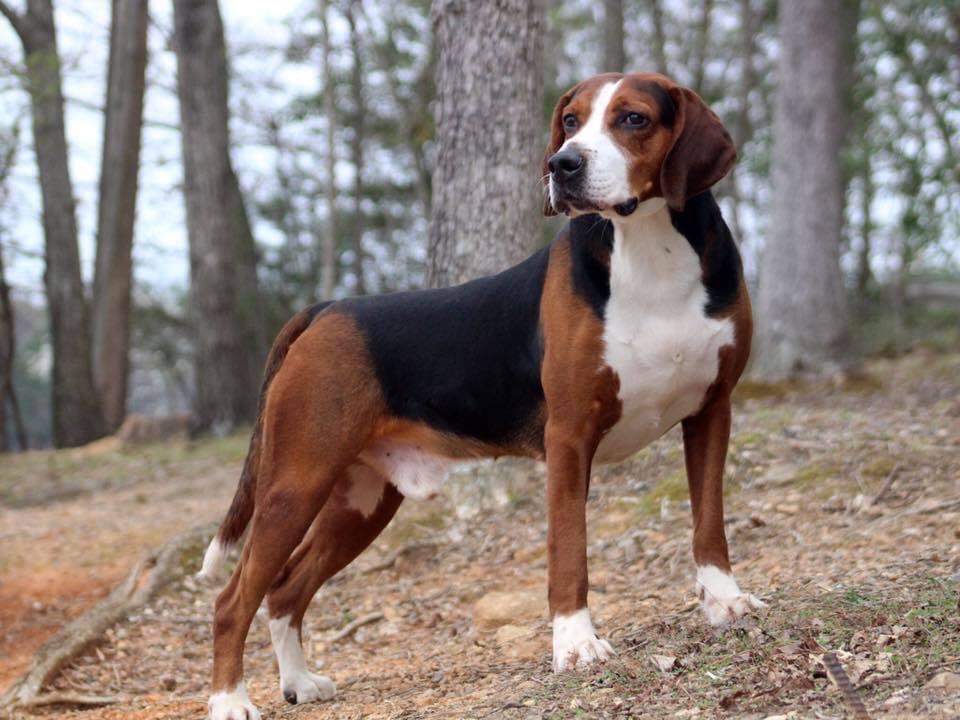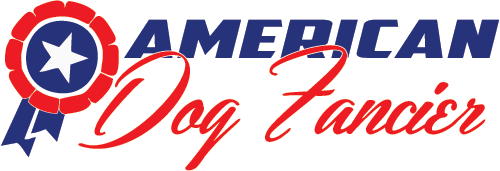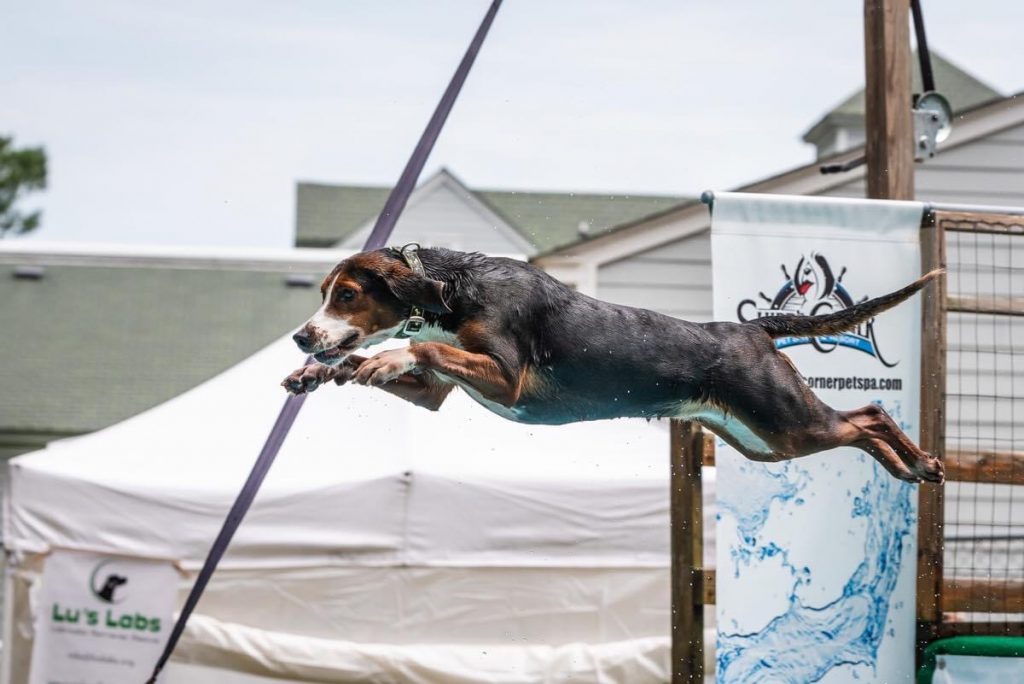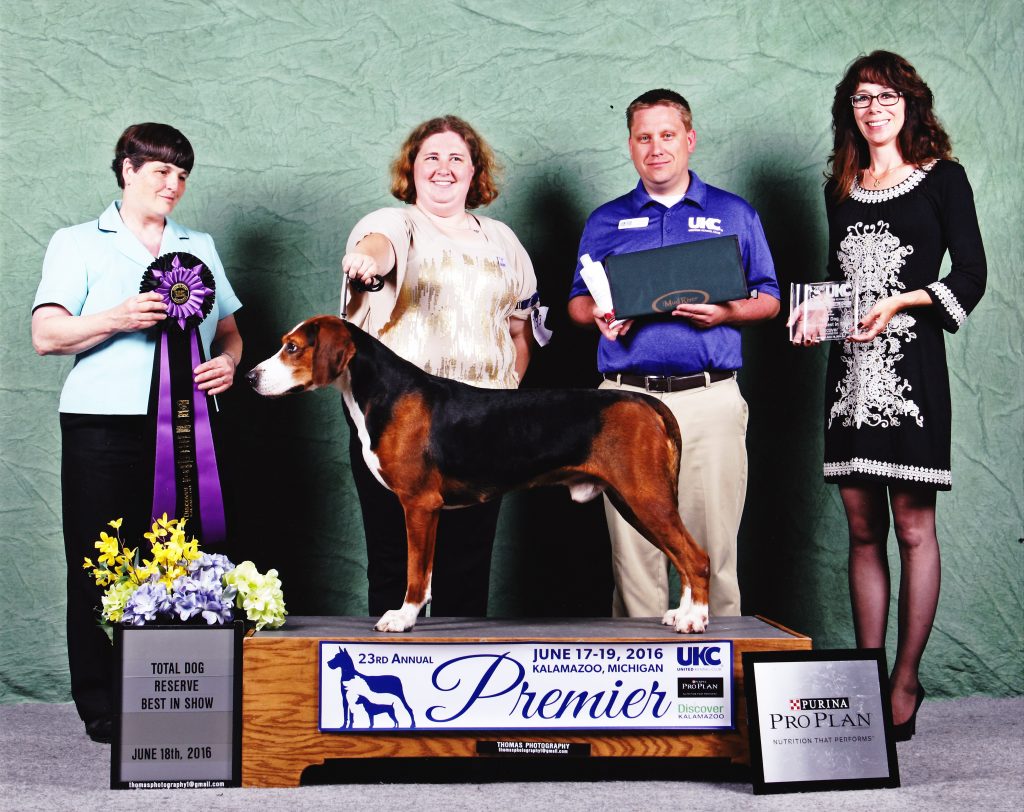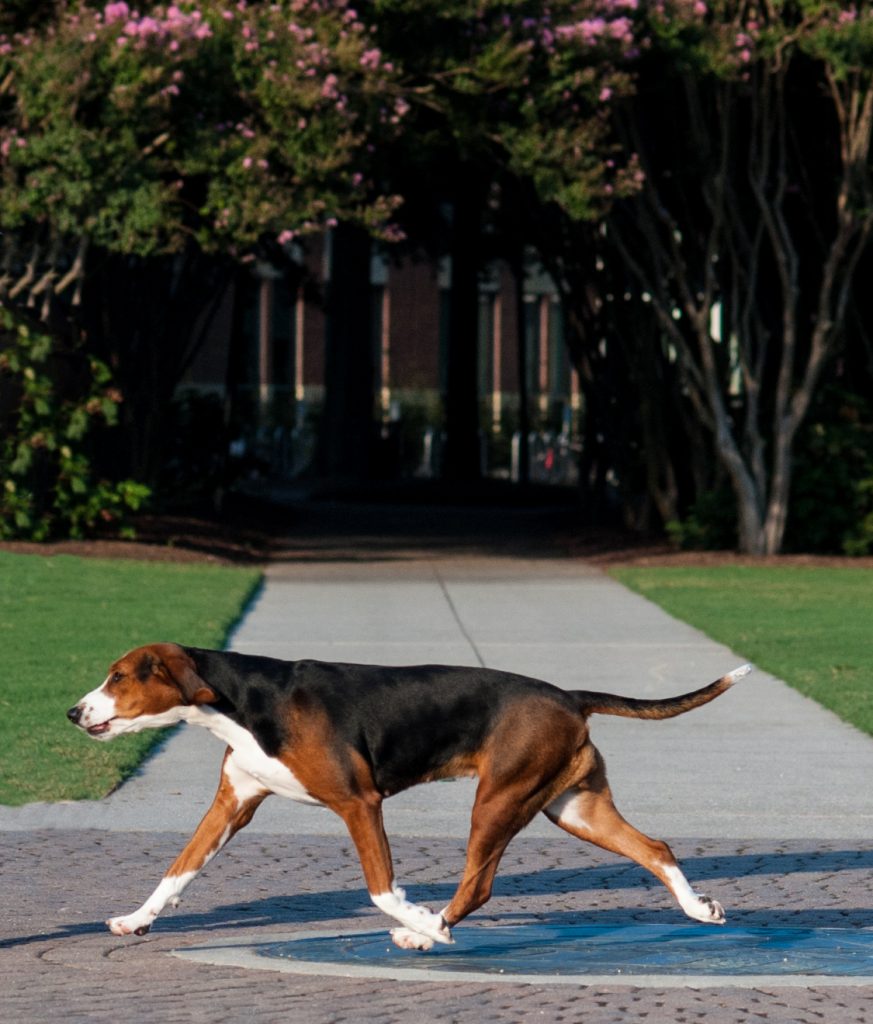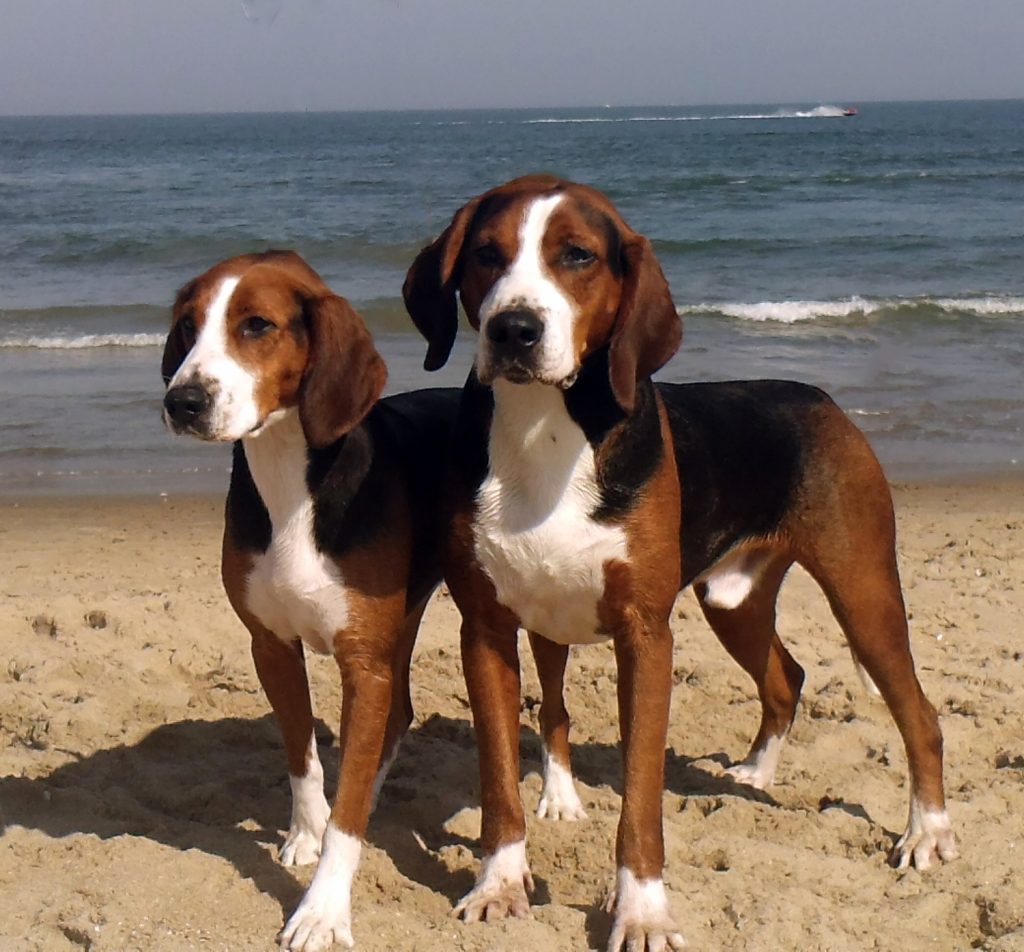Helping the Hamiltonstovare
By Jessica Freni with Ashley Hammock
Late this summer I read an impassioned post in the “Preservationists of Purebred and Purposefully bred Dogs” group on Facebook, it read,
“Please keep the US Hamiltonstovare breed community in your thoughts, prayers, or whatever you believe in. I’m the only breeder of the breed in the US and just found out that yet another frozen AI breeding didn’t take. Each breeding failure sets the advancement of this breed back dramatically.
Currently there hasn’t been a Hamiltonstovare litter born in the US in 7 years. There aren’t any unrelated intact males in the US, so the only option is shipping in frozen AI.
For those considering getting into a new breed, please consider the rarer breeds, we desperately need the help.”
I reached out to Ashley Hammock, Oceania Hamiltonstovare (on Facebook), to learn more about this breed’s challenges in the United States.
How would you describe the overall status of the Hamiltonstovare breed? How does this compare to the breed status in the US?
Hamiltonstovare globally have a stable population, especially in Sweden and Norway. Outside of those countries, the breed is incredibly rare to non-existent. The breed status in the US is critically endangered, there are less than 60 known Hamiltonstovare in the US and only a handful of them are intact, showing, and involved in dog sports.
What are the obstacles to success for the Hamiltonstovare in the US?
The biggest one is getting people involved in the breed in the US with dog knowledge or willing to get involved in dog sports/showing. The majority of the imports that come into the US are to pet homes where they are then spayed/neutered, don’t record them with the AKC FSS, and don’t get involved in dog sports. The Hamiltonstovare Club of America is affiliated with all of the Hamiltonstovare clubs around the world and we work closely to make sure that the right people get the breed and to help people get the dog that they want.
Are there options for collaboration between US breeders and those abroad? Such as sending dogs for exhibition/ breeding, importing puppies, use of semen, etc?
Currently, the Hamiltonstovare Club of America is working on obtaining frozen semen from various different males in Sweden and Norway to use as a means to add genetic diversity. Various breeders in the UK, Sweden, and Norway are willing to import puppies to the US but it is next to impossible to import adult dogs, even temporarily. In Sweden and Norway, the breed still does what it was bred to do, hunt hare or fox, so they have a very limited showing season that only happens when it isn’t hunting season. Many breeders in Sweden and Norway are very reluctant to send dogs anywhere unless they will be able to test their instincts. The Hamiltonstovare Club of America’s mission is to hopefully be able to conduct hunting trials that adhere to the Swedish rules, but in order for that to happen, we need more dogs in the US that are willing to get involved with dog sports.
When was the last registered Hamiltonstovare litter born in the US?
The last registered litter was born in 2014 but we are working hard to change that.
What is the status of the breed parent club in the US? Does it get support for international breed clubs? The AKC?
The Hamiltonstovare Club of America is a thriving club with full international support from the UK, Sweden, and Norway. As the breed is FSS recognized, the parent club is not allowed to claim for full parent club status by the AKC until the breed moves to Miscellaneous status. However, we participate in AKC Meet the Breeds events and AKC Responsible Dog Ownership Day events to help educate the public and the dog fancy about the breed.
How could the fancy get involved with and or support the breed?
The best way to get involved is to support the parent club and to bring unrelated dogs into the US.
What are ideal homes like for Hamiltonstovare? How important is the hunting home requirement? Are pet homes suitable for the breed?
The ideal home for a Hamiltonstovare is a home where they will be allowed to test their instincts, have an easy and understanding training style, have a sense of humor, and have a base understanding of scenthounds. Hunting in the same style that the breed is used in Sweden and Norway is next to impossible in the US, as the access to vast amount of forest is hard to come by where it is safe for the dogs and away from roads, but a home where they can test their instincts and keep them appropriate to the breed standard is ideal, that means only hunting hare or fox. We lay drag scents of hare and fox on a regular basis and my dogs go to a family farm and help locate coyote dens, as they are classified as an invasive species where the farm is. Pet homes are suitable for the breed as they are supposed to have a great off-switch but the pet home needs to be aware that they are extremely clever hounds that will hunt if the right game is available. A securely fenced yard is required for this breed and they do best in a home where they can run a lot. They are a versatile breed that is expected to do anything asked of them when not hunting. Hamiltonstovare in the US have titles in dock diving, weight pull, trick dog, and working towards other titles in various different sports. The breed makes a great service dog for those that can tap into the hound brain, they are naturally very perceptive to their people as they were bred to hunt with a hunter and not in a pack. There is a Hamiltonstovare therapy dog and a few Hamiltonstovare ACE Award nominees for service dog work.
According to the AKC website, there’s a “rescue problem”, how did this occur?
The rescue problem was brought to the attention to the club in 2011, when a person claimed to have a rescue Hamiltonstovare. With a rare breed, that is startling and almost unbelievable, however this dog was definitely a Hamiltonstovare. His name was Ruger and his photos were shared with multiple breeders around the world who unanimously agreed that he was a Hamiltonstovare. Once he was identified, there seemed to be a pattern that emerged and that was Hamiltonstovare seemed to appear in rural shelters along the Blue-Ridge Mountains (Virginia, West Virginia, Kentucky, Tennessee, North Carolina, and even South Carolina) between August and September and then in January through March. Those times were critical because those are when hunters were evaluating dogs for the upcoming hunting season and getting rid of dogs after the season was over. The current statistics are that over 65% of all Hamiltonstovare in the US come from a rescue and over 90% of those cases follow the pattern perfectly. The theory is that someone imported the breed in the 1980’s to 1990’s and got them as a hunting dog and tried to use them on deer, but the breed has been selectively bred to avoid all antlered game, so dogs that were not following deer were being dumped. We do not know who imported them but we do know that the original dogs probably came from Sweden. What makes this problem even harder to track is the pattern that some rescues have of pulling dogs from rural shelters and transporting the dogs across state lines. When we find a possible Hamiltonstovare in a rescue that doesn’t fit the pattern, most of the time we find out that the dogs originated in the impacted states. We have to be extremely careful with trying to investigate the source of the problem and in some cases informing the rescues. If the source finds out that they have a rare breed with a high demand, then they could easily turn into a puppy mill situation. Informing some rescues that they have a rare breed then turns into a sudden and dramatic increase in the dog’s adoption fee and demand for donations, even bidding wars have taken place over Hamiltonstovare in private rescues.
Hamiltonstovare are often misidentified, how do they differ from similar looking hounds?
Hamiltonstovare are built on a series of rectangles and they have a very distinctive tricolor pattern that extends down to all four legs, most tricolor scenthounds that people see won’t have a tan pattern that will cover the front legs to the elbow, let alone down to the pasterns which is what is required of Hamiltonstovare. Hamiltonstovare also should be severely faulted for having a full white collar marking around the neck. The most distinctive part is the tail, the Hamiltonstovare tail should be carried down when standing and elevated as an extension of the back when in motion, they should never carry their tail like a beagle, English Foxhound, American Foxhound, Harrier, Treeing Walker Coonhound, or Basset Hound.
The Hamiltonstovare is currently an AKC FSS breed in need of and eager for support from the dog show/breeding community, if you’re able or interested please reach out to Ashley Hammock to learn more!
